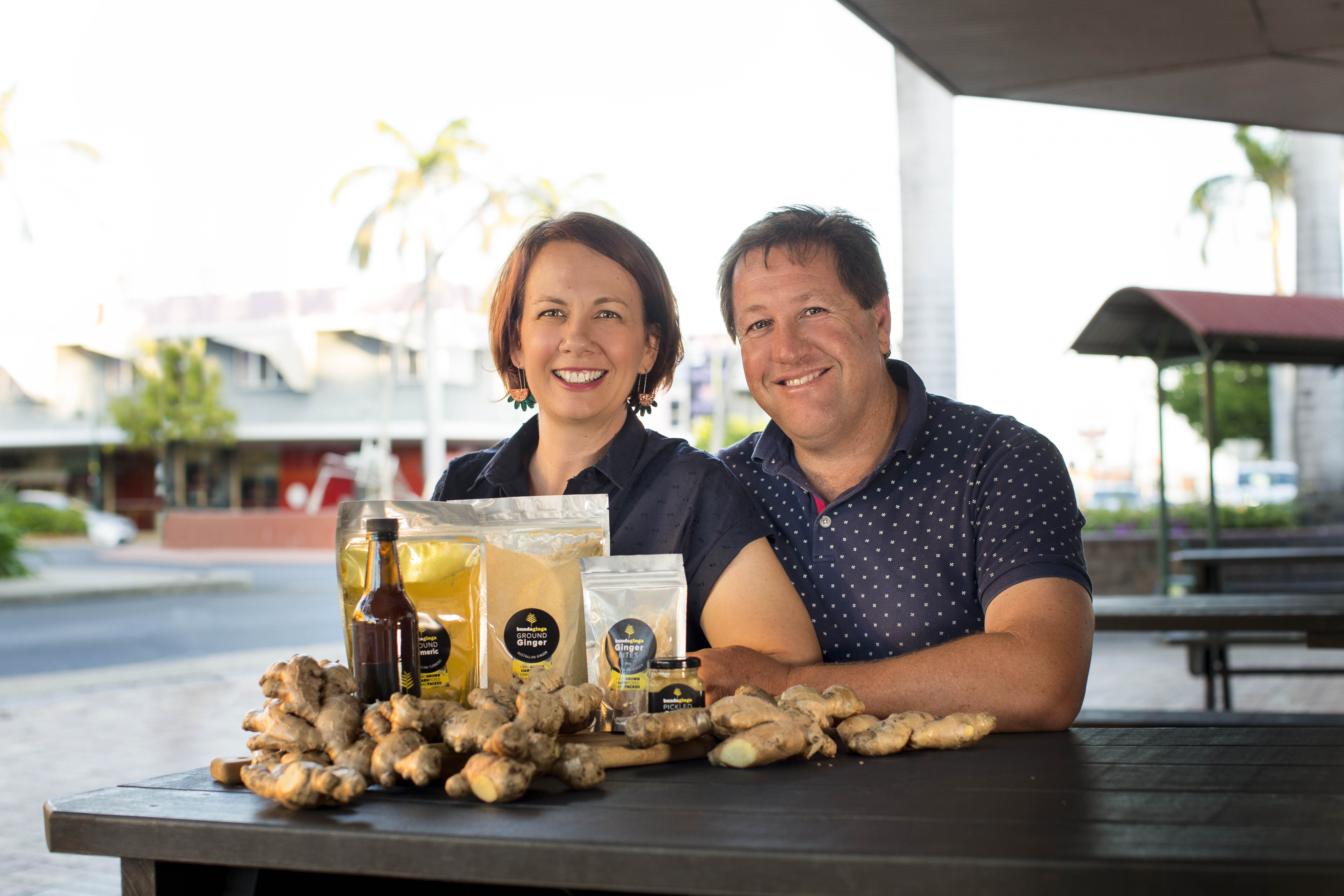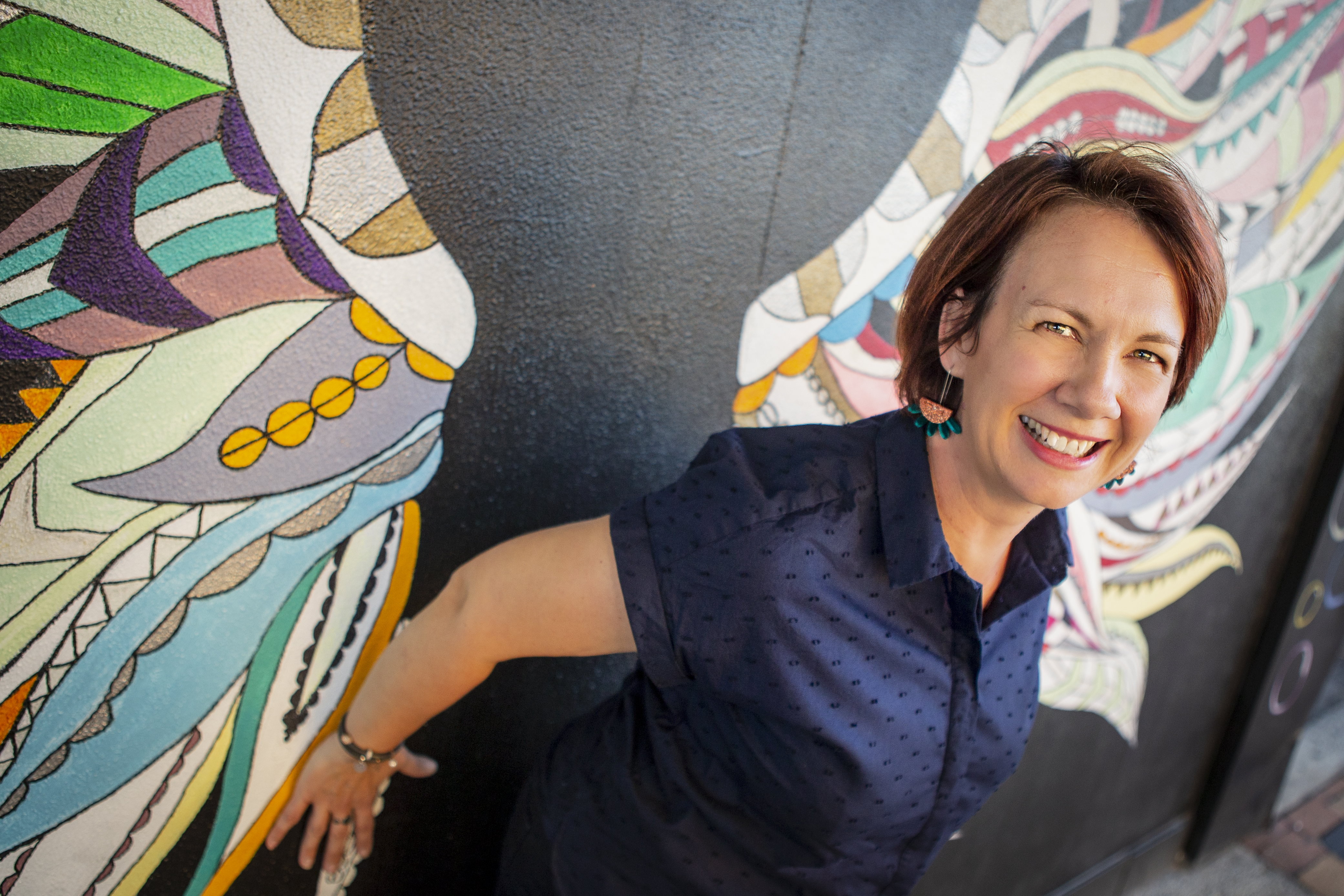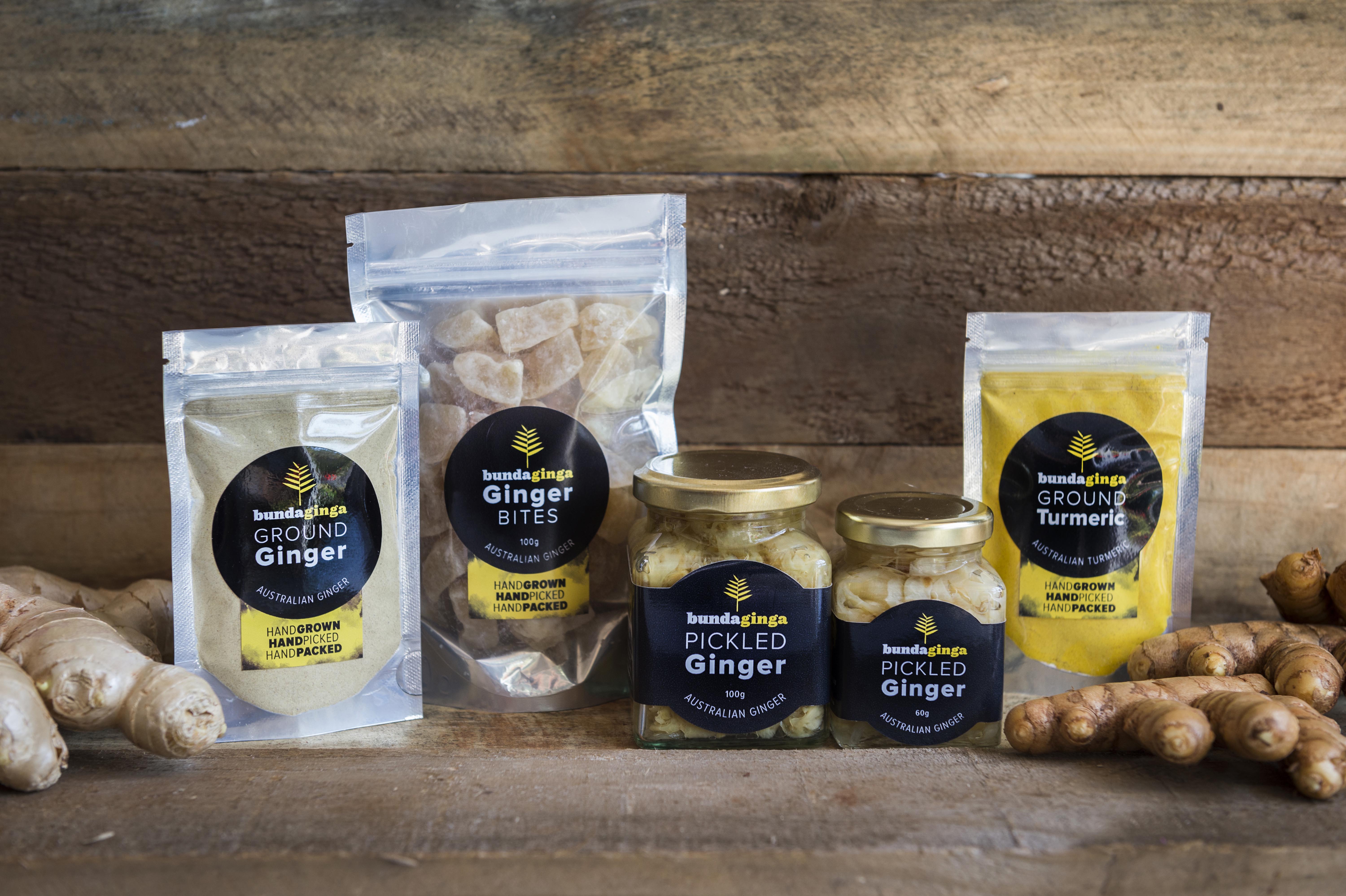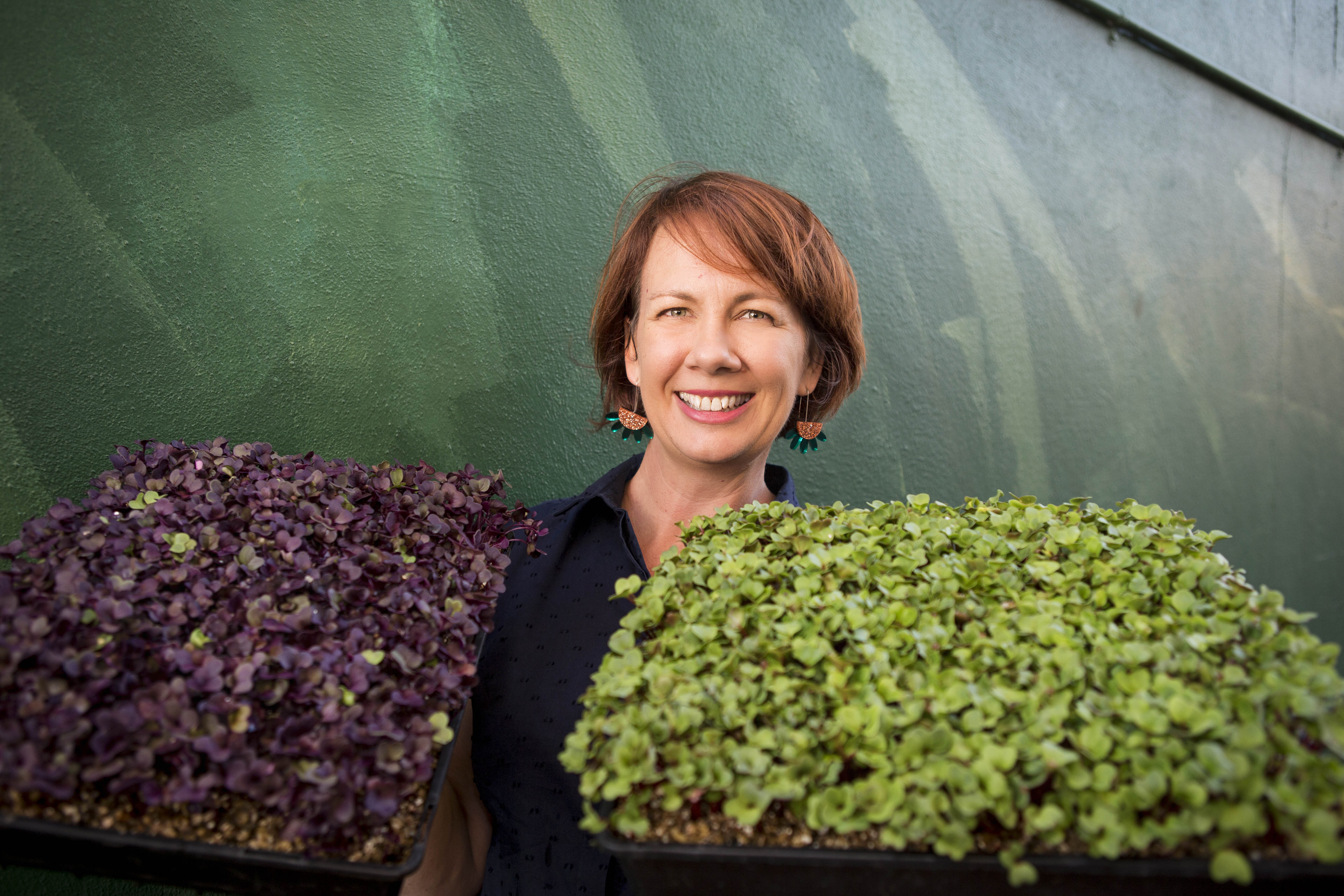Kate Rehbein: Sharing the Bunda Ginga tale
Kate Rehbein married into a fourth-generation Queensland farming family that had a rich history of growing sugarcane before diversifying into several smaller horticultural crops. Today, Kate and her husband Anthony grow several commodities including ginger, and her focus in recent years has been selling their ginger online to Australian consumers. Kate spoke to Vegetables Australia about her journey.
Fast facts
Name: Kate Rehbein
Location: Bundaberg, Queensland
Works: Bunda Ginga
Grows: Ginger, eggplant, tomato, kale and watermelon.
Ginger is used in many products including medicinal remedies, desserts, drinks, as a garnish for certain foods, and much more. Its history in Australia dates back to 1788 when the First Fleet arrived, but it would be another 150 years before it was grown commercially on our shores.
Today, ginger is grown in both the northern and southern regions of Queensland and northern New South Wales. One of Queensland’s ginger producers is Kate Rehbein and her husband Anthony, a fourth generation grower in Bundaberg.
The couple own Hummock Farms Company, which has two sub-businesses: the ginger growing operation Bunda Ginga and Hummock Produce. In addition to ginger, Anthony is currently growing eggplant, tomato, kale and watermelon.
Kate’s role in the business is operational; she takes care of the finances along with human resources, quality assurance, as well as overseeing the Bunda Ginga retail business (both online and a retail store in Bundaberg). In 2017, Kate’s hard work was recognised when she received a nomination for the Women in Horticulture award at the Hort Connections National Awards for Excellence.

A ginger approach
Kate and Anthony first started producing ginger in the early 2000s. Since then, Anthony has been President of the Australian Ginger Association while Kate has established Bunda Ginga as an online business. She explains that prominence was one of the reasons behind her decision to turn to online sales.
“One of the issues we were dealing with was the importation of ginger from Fiji. And we thought, how can we market ourselves differently to the public? We knew there were people out there who wanted those stories behind their produce,” Kate explains.
“There was an opportunity to market Australian ginger products so that’s what we did for our ground, pickled and ginger syrup products, as well as supplying fresh.” Despite the growing interest in Bunda Ginga products, there are still challenges both on- and off-farm. Kate says it can be difficult to juggle both the business and on-farm responsibilities.
“We’ve got three sides of our business: the growing side, the Bunda Ginga side and we have our retail shop – a produce and florist shop in town where we sell our products,” she says.
“You try to keep your fingers in so many different pies as well as keep a level head at the same time. It does produce challenges. But when people come back and tell you how good your product is, it makes your job worthwhile.
“We enjoy telling our story about the prominence of our products; how we do things sustainably and talking to people who are generally keen to buy direct from the farmer.”
“You have to believe in yourself. I always believe you’ve got to go with your gut feeling and stay true to your values, and not compromise because you’re worried about what other people think,”

Seizing opportunities
As a grower and business owner for almost two decades, Kate believes that “it’s never been a better time for women to get into horticulture”.
“There are just so many opportunities that weren’t out there 10 or 15 years ago. You just have to follow social media and see different women in different positions in horticulture doing what they love, which is exciting.”
Kate and Anthony’s daughter, Lilly, is following in her parents’ footsteps. She has started an agriculture degree at the University of Queensland’s Gatton Campus, and Kate says she is interested in returning to the family farm one day.
“We’d like to push Lilly to work somewhere else first before she comes back,” Kate explains.
“We’re a firm believer that you need to branch out and get your own ideas before you come back to the farm. But we’re always open for any of our children to come back and work for us.”
Kate searches the internet and social media for advice and new ideas, as well as industry publications. She also enjoys travelling around to different shops and farms to see how their operations work.
“Both Anthony and I love to travel; we love being overseas. Both of us went on an AUSVEG grower tour to Europe to see the technology and the way people farm over there.
“We visited Koppert Cress in the Netherlands which produces micro-herbs, and they told us how they get consumers to want their product. And that’s where Anthony wants to be – where consumers are asking for a product rather than him trying to sell his product to the public.”
It is hoped that in five years’ time, the Rehbeins will expand their retail business.
“We’re looking to be vertically integrated where we can grow and supply our retail shop with fresh and value-added products,” Kate says.
“We’re also looking at agri-tourism where we can get people to visit our farming business and tell our story, and get people more involved in knowing where their products are coming from,” Kate says.
“This is basically to grow, pack and sell to the end consumer and have that story with them.”
Achieving goals
Kate has some wise advice for women looking to establish their own horticultural business.
“You have to believe in yourself. I always believe you’ve got to go with your gut feeling and stay true to your values, and not compromise because you’re worried about what other people think,” she says.
“There will always be people out there who will knock you for what you want to achieve, but you’ve just got to go with your gut, believe in what you want to do and go for it.
“Sometimes it takes time, but you can’t rush things. In the end it’s worth it – because if you just have the feeling that it is a good idea then you should just do it.”

This grower profile first appeared in the leading magazine for the Australian vegetable industry, Vegetables Australia. If you’d like to subscribe to receive a new edition of Vegetables Australia in your mailbox every two months, use our online subscription form!
Image credits: Sabrina Lauriston Photography and Selina Ferrais Photography.

